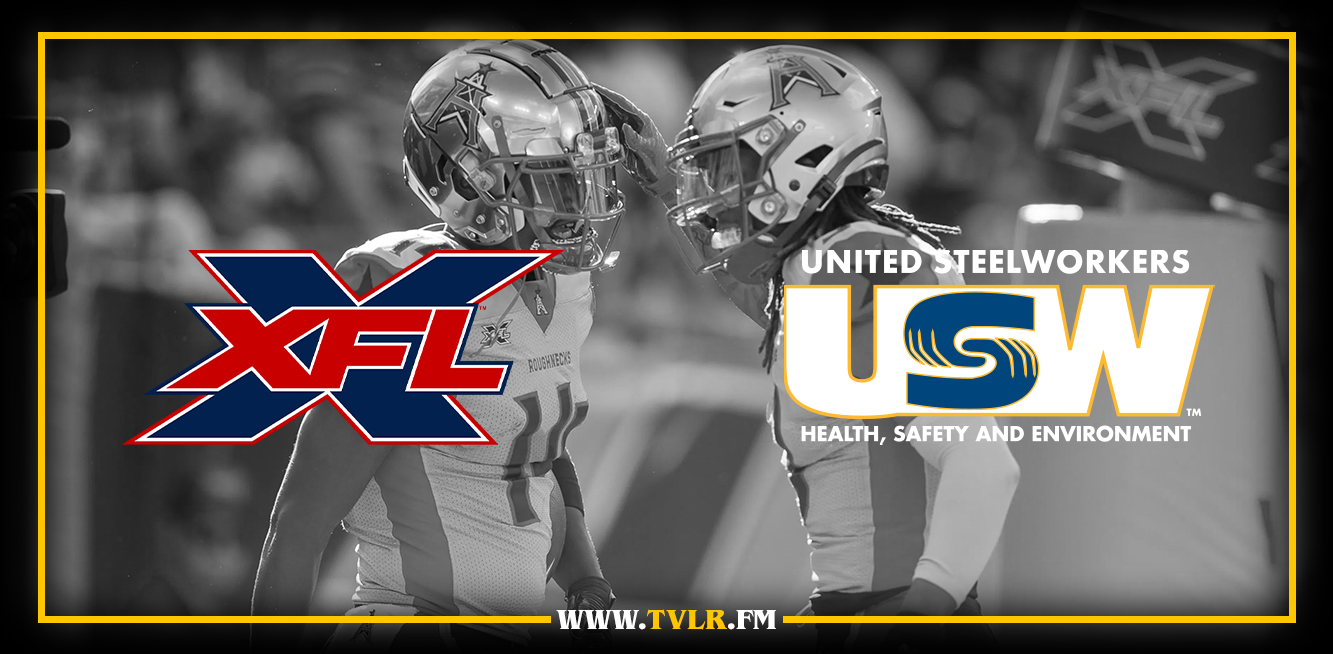rofessional spring football is heating up, with the revived XFL’s season already underway and the USFL opening its season next month. Now, XFL players seek to follow in the footsteps of their brothers in the USFL and form a union.
According to a March 10 release from the United Steelworkers, XFL players “have filed a petition for a representation election with Region 16 of the National Labor Relations Board (NLRB) on behalf of roughly 475 professional athletes in the XFL.” These professional football players are organizing with the United Steelworkers (USW).
Workers want to join unions to have a voice on the job and over their working conditions, including compensation, benefits, and safety. Workers want to be respected and treated fairly, which spurs some workers to join unions and organize new ones. Professional athletes share those concerns and desires with their fellow workers and at the highest level, professional athletes are already unionized. Given the potential benefits from unionization and record high public approval of unions, it should not be surprising to see this new campaign among XFL players.
“No matter whether it’s a factory or football field, every worker deserves a voice on the job and in determining their own futures,” said USW International President Thomas M. Conway in the announcement.
Professional football players with another spring league, USFL, previously organized a union with the United Football Players Association (UFPA), also an affiliate of the United Steelworkers.
Ryan Cave, an executive with the United Football Players Association and former professional football player himself, previously appeared on The Valley Labor Report on January 28, 2023 to discuss the UFPA’s successful campaign to organize USFL players and secure a good contract for their membership.
With a remarkable 100% ratification vote, the UFPA negotiated a contract with the USFL to provide additional security for the players. Given the tumultuous history of spring football leagues, players sought contractual protections in regards to workers compensation, equipment, and healthcare, areas of particular importance given the physical nature of the sport. Compensation and housing were also of primary concern, with the contract securing a pay raise as well as a housing stipend and travel reimbursements. Negotiations also hammered out the details on work schedules and safety. The agreement is a three year contract.
“All players throughout the league working together to build unity and solidarity is the key to getting results,” Cave said in the March 10 release from USW. “We know athletes stand to gain the most when we use one voice to demand fairness and justice on the job, and that’s what XFL players will achieve by organizing a union.”
Many of the players in XFL previously played in the USFL, NFL, and other spring football leagues. The conversations had and relationships built over the past few years among these players helped to provide a foundation for this campaign. In a phone conversation with Cave, he shared that many of the players were familiar with player unions from their previous experiences and seeing the successful UFPA campaign and contract further fueled interest among XFL players to secure a union and a good contract of their own. Cave said the USW has been a great fit and a great partner in the effort to organize professional athletes and also pointed to the AFL-CIO Sports Council, formed just last year.
According to Cave, the union is working with the NLRB office in Dallas and hoping to have an election scheduled in the next few weeks. The players and their union representatives are looking forward to a successful election, after which the union can begin bargaining a contract. Members point to healthcare, housing, and salaries as some of the key issues expected to be addressed in bargaining.
The NFL makes over $17 billion in annual revenue and despite some eye-catching contract numbers involving the highest profile players, there is significant disparity between the players and the ownership. As the XFL is so new, the league’s financial outlook is harder to determine. If XFL players successfully unionize, as part of the collective bargaining process they will be able to request information and obtain a clearer picture of the league’s revenue. The ability to obtain some of the facts behind an employer’s finances is an often overlooked benefit to the collective bargaining process that non-union workers may not realize.
Americans, and Alabamians, love sports and football in particular. Cave reminded fans that while they watch and enjoy sports, they should remember these are professional workers who, like other workers, have rights in the workplace and a desire to protect those rights. If you enjoy the product, don’t forget it is the (often dangerous) labor of the athletes responsible for the product. While there are no specific public calls to action at this time, Cave encouraged fans to show their love and support of the campaign on social media: share the news of the union drive, leave positive reactions, connect with USW, and let people know you stand in solidarity with the organizing XFL players.
Last year, all eight teams in the USFL were hosted in Birmingham. While no longer the case for year two of the revived league, Alabama is home to the Birmingham Stallions who will be playing six home games at Birmingham’s Protective Stadium. Both the USFL and XFL feature numerous players who played college and high school football in the state of Alabama.
Alabama’s labor movement is excited to watch our union brothers play and we are cheering for their success not just on the field, but at the ballot box and at the negotiating table.
